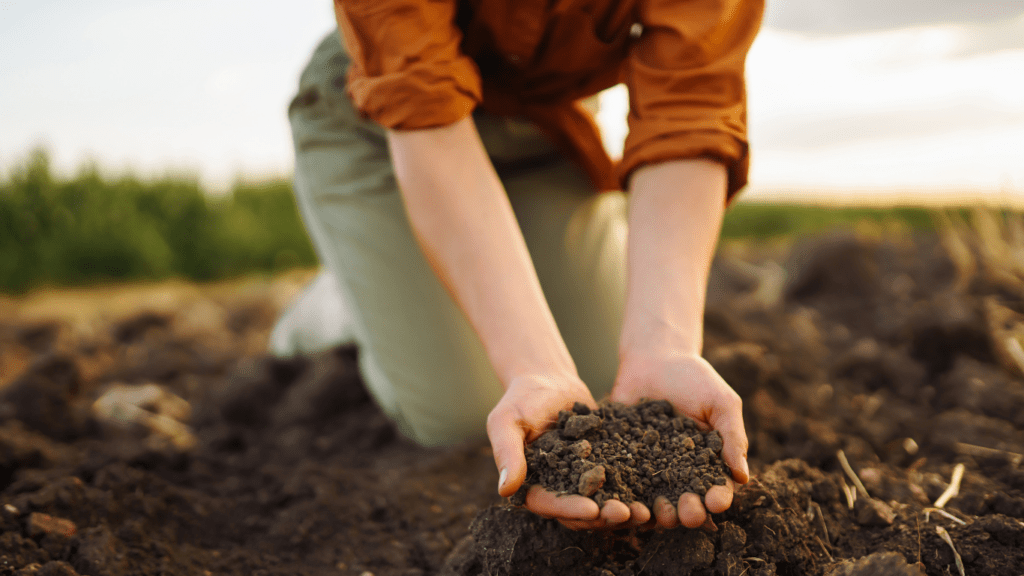Understanding Composting and Its Benefits
Composting turns organic waste into nutrient-rich soil. It helps gardens flourish and reduces landfill contribution.
Why Composting Matters
Composting converts waste into valuable resources. Organic waste includes kitchen scraps and yard clippings. This process breaks them down into compost, which enriches soil and aids plant growth.
It supports sustainable gardening practices. Plus, composting reduces the volume of trash sent to landfills, mitigating methane emissions that contribute to climate change.
Environmental and Personal Benefits
Environmental benefits circle around waste reduction and soil health. Composting decreases organic waste in landfills, which cuts methane production, a potent greenhouse gas according to the EPA.
It improves soil structure by adding essential nutrients, enhancing its water retention capacity, and reducing the need for chemical fertilizers.
Personal benefits include cost savings and improved plant health. Using homemade compost reduces the need to buy commercial soil conditioners and fertilizers.
Plants grown with compost tend to be healthier due to the rich, balanced nutrients, leading to fewer pests and diseases.
By understanding its benefits, composting becomes more than just a waste management method; it’s a practice that fosters a healthier environment and garden.
What You Can Compost
Composting requires a balance of organic materials to create nutrient-rich compost. Here’s a detailed look at what you can and can’t compost.
Greens and Browns: Composting Ingredients
Composting relies on two types of materials: greens and browns. Greens are nitrogen-rich and include items like vegetable scraps and coffee grounds.
Browns are carbon-rich and include items like dead leaves and cardboard. A good compost mix maintains a balance of these components to ensure effective decomposition.
Greens:
- Vegetable scraps: Carrot peels, broccoli stems.
- Fruit scraps: Apple cores, banana peels.
- Coffee grounds: Used coffee grounds and filters.
- Grass clippings: Freshly cut grass.
Browns:
- Dead leaves: Fallen autumn leaves.
- Cardboard: Shredded cardboard boxes.
- Paper: Non-glossy, shredded paper.
- Wood chips: Small, untreated wood pieces.
What Not to Compost
Not all organic materials are compost-friendly. Certain items can attract pests or hinder the composting process.
- Meat and dairy: Rotting meat and milk can attract rodents.
- Fats and oils: Slow down decomposition and attract pests.
- Diseased plants: Spread diseases to compost.
- Pet waste: Risk of harmful pathogens.
By following these guidelines on what to compost, you can create a balanced, effective compost pile.
Setting Up Your Composting Area

A well-organized composting area is critical for effective composting. Consider location and choose an appropriate system to maximize results.
Choosing the Right Location
Select a spot close to your garden, making it easier to add compost to your soil. Opt for a level area with good drainage to prevent waterlogging; this keeps your compost from turning into a soggy mess.
Shade can regulate temperature, preventing the compost from overheating on hot days. Accessibility matters, so make sure the location allows you to easily add materials and turn the pile.
Proximity to a water source can help keep the compost moist, an essential element for decomposition.
Types of Composting Systems
Choose from various composting systems based on your needs. Traditional compost bins are ideal for backyard gardening; they’re easy to use and available in different sizes.
Tumblers offer faster composting by enabling easy turning, which accelerates the breakdown process. Worm composting (vermicomposting) suits small spaces or indoor setups, using worms to break down organic matter efficiently.
Heap composting is the simplest method; pile materials directly on the ground, ideal for larger yards and high volumes of waste.
| System Type | Best For | Key Features |
|---|---|---|
| Traditional Bin | Backyard gardening | Low maintenance, various sizes |
| Tumbler | Faster composting | Easy turning |
| Vermicomposting | Small spaces/indoors | Uses worms, efficient |
| Heap Composting | Large yards, high volume waste | Simple, direct on-ground piling |
Choose the system that aligns with your available space, volume of waste, and level of maintenance you’re prepared to undertake. Each system offers unique advantages to cater to different composting needs.
Maintaining Your Compost
Effective compost maintenance ensures decomposition and nutrient content remain optimal. Follow these steps to manage your compost pile.
Balancing Components: Tips and Tricks
Maintaining the right balance of green and brown materials is crucial. Aim for a mix of 50-70% browns like dried leaves and 30-50% greens like vegetable scraps.
Chop or shred larger items for faster breakdown. Turn the pile every 1-2 weeks using a pitchfork to aerate it, encouraging microbial activity. Add water to maintain moisture levels similar to a damp sponge; too dry or too wet can hinder decomposition.
Troubleshooting Common Issues
Bad odors typically indicate too much green material or not enough aeration. Add more browns and turn the pile frequently. If the compost isn’t breaking down, it may need more greens or moisture.
Ensure it’s damp and contains a good mix of materials. Pests like rodents could signify the presence of food waste; avoid composting meat and dairy. Use a rodent-proof bin if pests persist.
Using Your Compost
Finished compost adds valuable nutrients and improves soil structure. This section covers determining when compost is ready and how to use it effectively in your garden.
Determining When Your Compost Is Ready
Mature compost looks dark and crumbly and has an earthy smell. It takes 2-6 months, depending on several factors. Check for these signs to know it’s done:
- Uniform Texture: No recognizable food scraps or yard waste.
- Earthy Smell: Absence of sour or rotting odors.
- Consistent Temperature: Compost pile remains at ambient temperature.
How to Use Compost in Your Garden
Incorporate compost into various gardening tasks to boost plant health and soil fertility:
- Soil Amendment: Mix 2-4 inches of compost into the top 6-8 inches of soil before planting.
- Mulch: Spread 1-2 inches around plants to retain moisture and suppress weeds.
- Potting Mix: Blend compost in equal parts with soil and sand or perlite for a nutrient-rich potting medium.
- Top Dressing: Sprinkle thin layers on lawns, then water to help nutrients reach roots.
Apply compost in spring and fall to support plant growth and soil conditioning throughout the year.


 is a committed writer and environmental advocate at Eco Elegance Technique, specializing in sustainable practices, health, and wellness. With a background in environmental studies, Peter focuses on providing readers with practical advice on integrating eco-friendly habits into their daily routines. His work aims to inspire a deeper connection between personal well-being and environmental responsibility, making sustainability accessible and actionable for everyone.
is a committed writer and environmental advocate at Eco Elegance Technique, specializing in sustainable practices, health, and wellness. With a background in environmental studies, Peter focuses on providing readers with practical advice on integrating eco-friendly habits into their daily routines. His work aims to inspire a deeper connection between personal well-being and environmental responsibility, making sustainability accessible and actionable for everyone.
